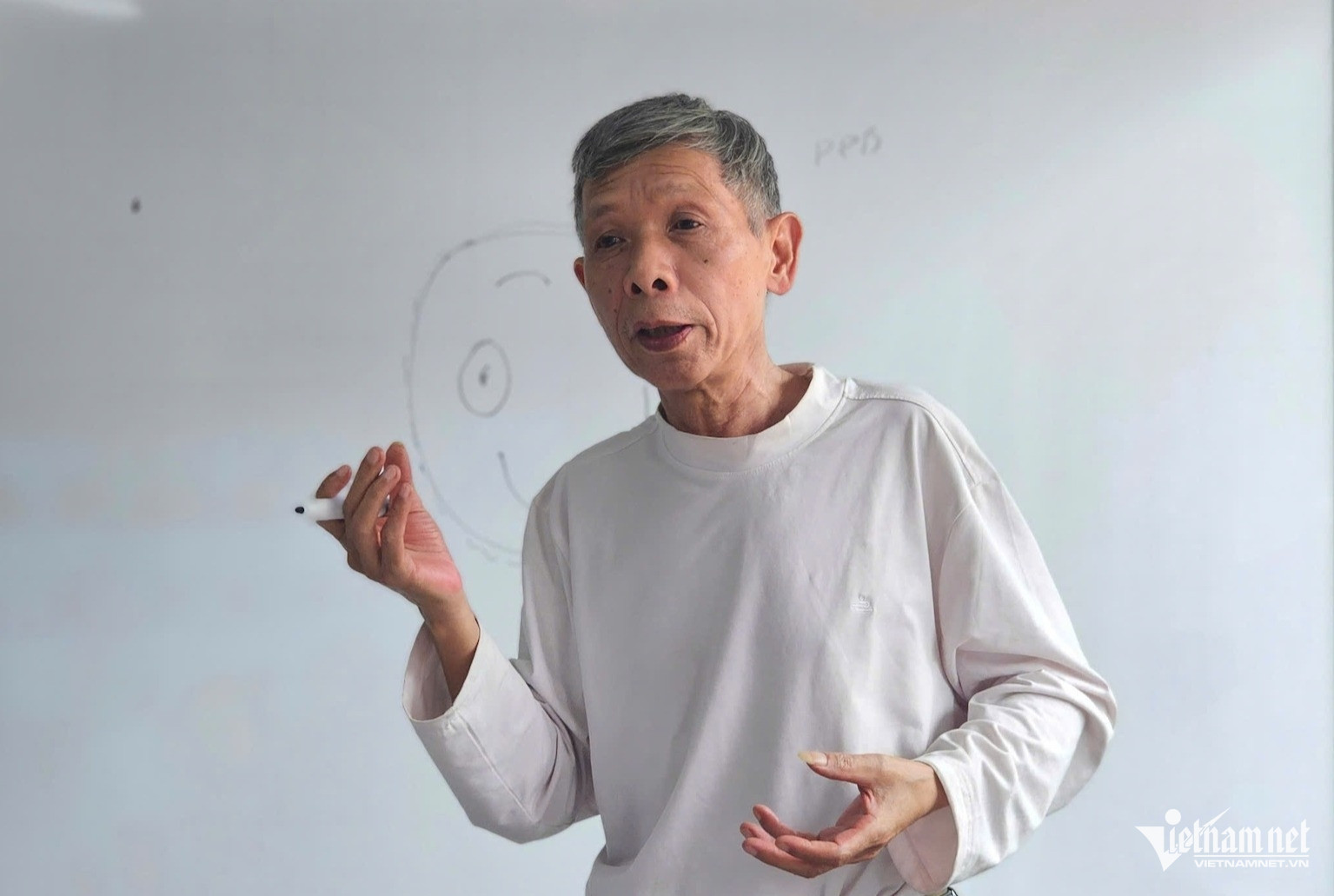Mr. Trinh Dinh Nang is no ordinary inventor. He has no academic degree, no state-of-the-art lab - yet he holds five high-impact patents. His work, often done in solitude and silence, has led to innovations in core technology that are now recognized nationally and beyond.

Resolution 57 of Vietnam’s Politburo on the strategic development of science, technology, innovation, and digital transformation has opened new doors for inventors like Trinh Dinh Nang.
It shifts the focus to practical results, allowing those without formal credentials to contribute meaningfully - provided they’re given the opportunity to test, connect, and transfer their innovations.
“Resolution 57 liberates creative thinking and removes structural barriers. It acknowledges the value of results, not just degrees or institutional titles. For passionate, self-taught scientists like me, it’s an incredible breakthrough,” said Nang.
His optimism is hard-won. For years, Nang pursued science alone, frustrated by the reality that many costly research projects never make it beyond academic filing cabinets. “Whenever I work on something, I think of how to apply science and technology to it,” he said.
From seventh grade to steelworks to patents
In 2019, during a scientific conference, a graying man quietly shed tears. Few knew why - until he took the floor and spoke candidly: “We invest so much in science, yet so many inventions remain stuck in laboratories, unable to make a difference.”
That man was Trinh Dinh Nang, a seventh-grade dropout with no formal training. Despite this, he has earned five patents. Foreign companies have offered lucrative deals, but he’s chosen to keep his innovations in Vietnam.
His journey is one of perseverance. Forced to quit school due to family hardships, he moved with his parents to the mountainous province of Bac Kan. Despite no classroom access, he remained obsessed with learning. He devoured books, sought out chemistry and physics teachers in Thai Nguyen and Bac Kan, and learned by doing.
While working as a laborer at Thai Nguyen Iron and Steel Plant and later at a wood factory in Bac Kan, Nang constantly looked for ways to improve efficiency using science. His first recognized invention came during his time at the steel plant - and was awarded a monetary prize that he cherishes more than any certificate.
In winter 1996, while watching a Nobel Prize ceremony on television, he saw a presentation on fullerene, a carbon molecule with immense scientific value. It inspired him so deeply that he spent the next 20 years researching it. After more than 4,000 failed experiments, he finally succeeded in May 2015. By 2018, his C60-C70 fullerene production system received a national patent, opening the possibility for a new industry in Vietnam.
A self-built lab, a mind that never rests
 |
 |
 |
One international conference introduced Nang to the medicinal potential of Vietnamese herbs. It ignited a new pursuit. Allowed access to the Ministry of Science and Technology’s library, he immersed himself in research, designed his own machines, and began experiments. However, his first attempt at extracting curcumin - using standard methods - proved financially unviable.
Undeterred, Nang went back to the drawing board. He lived at his workplace for five months, choosing local glutinous turmeric as his first raw material - once worth only a few cents per kilogram. Meanwhile, purified curcumin sold for thousands of dollars per kilogram globally.
He eventually developed a nano-curcumin extraction line with 95% efficiency - exceptionally high by industry standards. It became his fastest successful project and paved the way for other herbal extractions such as gynostemma, crinum latifolium, solanum procumbens, and gac fruit. His vacuum extraction technology retains bioactive compounds, purity, and potency.
“This research has opened a new path for producing and processing natural compounds. It’s not just core technology - it’s a foundation for an advanced herbal medicine industry suited to Vietnam,” Nang said.
He also patented a medical waste incinerator that reduces toxic emissions by rapidly cooling exhaust from over 1,000°C to below 100°C in just a third of a second, preventing the formation of harmful dioxins and furans.
One female entrepreneur offered to bulk-buy his incinerators - if he inflated the bid price in medical procurement files. Nang flatly refused. “As a researcher, I can’t accept that. It’s unethical and illegal.” Taiwan (China) later offered a high price to acquire his patent, but he again declined, choosing to retain the innovation for Vietnam.
Despite years of working alone, he does not feel isolated. “Resolution 57 lifted a weight off my shoulders. It recognizes practical applications and supports policies that connect grassroots ideas with national systems,” he said.
The silent hours of invention

At a high-level meeting on April 1, Party General Secretary To Lam emphasized the need to “stay grounded in reality and expand perspectives,” particularly by learning from private sector innovation. He pointed out that science and technology in Vietnam have focused too heavily on administration rather than practical productivity.
Nang agrees. He cites several world-renowned scientists who lacked formal degrees, insisting that scientific thinking is more valuable than academic credentials. That belief has guided his quiet, tireless journey - building devices, creating makeshift labs, and testing each component with methodical care.
Now in his 60s, Nang still keeps to an unusual schedule: asleep by 8 PM, awake at 1 AM. He calls it the time “when the universe is asleep” - a sacred silence where ideas come to life, materials reveal their secrets, and wild hypotheses find their footing.
According to Prof. Dr. Nguyen Van Noi, Director of the Key Laboratory for Advanced Materials and Green Development at Vietnam National University, Hanoi, Nang’s success is fueled by passion, discipline, and relentless curiosity.
“Though not formally trained, he studies deeply and works closely with top scientists. He tests his products in leading national and international labs. His work isn’t driven by impulse, but by rigorous, methodical scientific processes,” said Prof. Noi.
He also notes Nang’s unique blend of scientific and entrepreneurial thinking. “He believes innovations must meet real-world needs - not just personal satisfaction. That mindset helps commercialize inventions, providing funding for future research.”
Thanh Hue